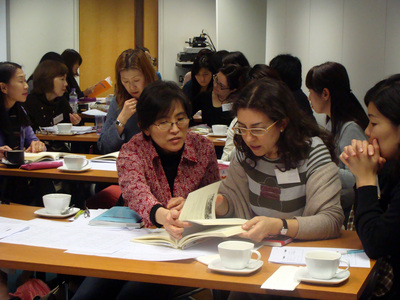29/11/2012
 |
On November 27th 2012, 34 teachers attended the Japan Foundation’s November Japanese language teachers’ seminar, entitled Grammar for Good Writing: Ways of Thinking and Teaching (Applied to GCSE) /「うまく」書くための文法-考え方と教え方(GCSEを例にして). This seminar, co-organised by the Association of Japanese Language Teachers in Europe (AJE) and the Association for Language Learning (ALL), re-examined the prominence of language knowledge placed on teaching grammar within Japanese language education and focused on how it can be put to practical use, in addition to considering ways of applying these teaching methods to KS4 writing tasks. The day began with an introduction to AJE’s J-GAP (Japanese Global Articulation Project) by Suzuko Anai. J-GAP aims to ensure that learners progressing from a lower to higher level are taught in a way that builds upon their existing knowledge, resulting in a smooth transition from beginner to intermediate and intermediate to advanced levels. This was followed by an introduction to Language Education in the UK and how it relates to the Common European Framework of Reference for languages (CEFR) /JF Standard for Japanese-Language Education, held by the Japan Foundation London’s Chief Japanese Language Advisor, Dr Seiji Fukushima. He explained that since the launch of CEFR in 2001, foreign languages are now being recognised as part of lifelong education, and that questions appearing in recent GCSE papers, which feature real-life situations, seem to reflect this trend. Finally, Lydia Morey of ALL held a workshop on teaching methods for grammar and sentence patterns , as applied to KS4 compositions, and in doing so gave teachers the chance to discuss how they could apply these methods in their own classrooms. We hope that the day proved useful for all the teachers who came. Once teacher commented, 「今後、教える時に活用させて頂きたいです。」(“I want to try and put [what I have learned] to use when I am teaching from now on.”) |



 Japanese Language Navigation
Japanese Language Navigation
